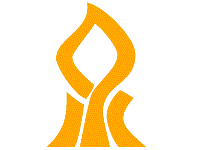The development is intended to provide continuous measurements of the soil contamination potential as an integrated warning system for the protection of groundwater against contamination originating from the surface or the upper layers of the soil

A modern and valuable system to combat the pollution of water sources was recently developed by Dr. Ofer Dahan, a researcher at the Zuckerberg Institute for Water Research (ZIWR), at the Yaakov Blaustein Institute for Desert Research at Ben-Gurion University of the Negev. The development is designed to provide continuous measurements of the soil contamination potential as an integrated warning system to protect groundwater from contamination originating from the surface or the upper soil layers.
The water and pollutant control system (W&CMS) provides for the first time information on the movement of water and pollutants in a deep unsaturated medium: between the ground surface and the groundwater level. The system is designed to enable early and real-time identification of the composition of the water and the pollutants that seep through the deep soil layers into the groundwater. The unsaturated medium includes the upper soil layers and the rock units found between the soil surface and the groundwater level. Seepage of rainwater and floods through the unsaturated medium constitutes the main enrichment mechanism of the groundwater.
According to Dr. Dahan, the monitoring systems to protect groundwater from pollution have traditionally been based on information from the groundwater. This information was usually produced from boreholes penetrating the aquifer. This control method is applied all over the world and in most countries there are laws that require monitoring of groundwater as a control against potential pollutants. However, this method is flawed since finding contamination in the groundwater is a clear indication that the groundwater is already contaminated. Furthermore, usually visible contamination in drilling water indicates the reality of a much larger contamination cloud than that discovered in the drilling. In fact, contamination discovered in drilling water reveals only the tip of an iceberg of contamination that has accumulated over many years of continuous leaks.
The monitoring of the unsaturated medium through systems that will provide information in real time even before the contamination reaches the groundwater is a necessity of reality and perhaps also the only means that enables the protection of the groundwater, since the traditional approach to monitoring the groundwater as a control mechanism for the protection of the groundwater is problematic, ineffective and in fact a failure all over the world . In order to do this, accurate and achievable monitoring and control systems are required that can be implemented at reasonable costs wherever there is a potential for groundwater contamination. This approach was the basis for the development of the system for monitoring unsaturated media. It should be noted that this kind of technology was not available until now, and the new system developed at Ben-Gurion University is designed to provide continuous measurements of the soil contamination potential as an integrated warning system to protect groundwater from contamination originating from the surface or the upper layers of the soil.
The developed system has already been successfully installed in several places in Israel as well as in other countries and has proven its ability to provide essential information on water seepage. The fact that groundwater is the most important source of water in Israel as well as in most countries of the world, including countries where there is no shortage of surface water such as Northern European countries, globally accelerates the fight against groundwater pollution. "Of course, the fight against groundwater pollution has direct and decisive consequences on a variety of activities with economic aspects, such as agricultural development, industry, and urbanization. The availability of the state-of-the-art system will give the institutions entrusted with maintaining the quality of groundwater, more power to demand from potential polluting entities not to exceed guidelines and protect water quality with greater success," explains Dr. Dahan.
The development of a pollutant control system is at an advanced stage of research and prototype construction for a wide range of applications. The university's technology commercialization company, B.G. Negev Technologies is currently working on locating potential investors for further development of the system.

One response
I was not able to extract any information from the article except for the fact that in Ben Gurion a method was developed related to monitoring pollution from water reservoirs.
How and with what efficiency? Not a single word.